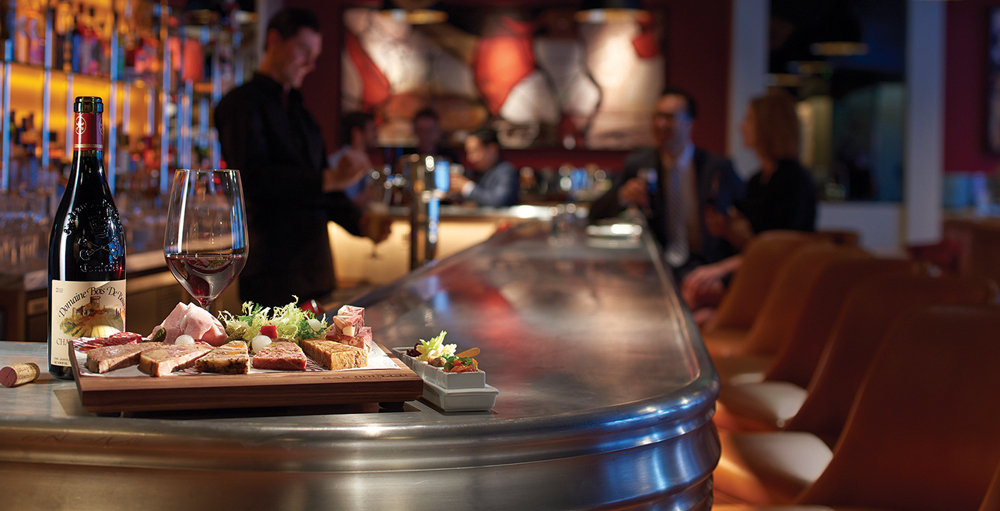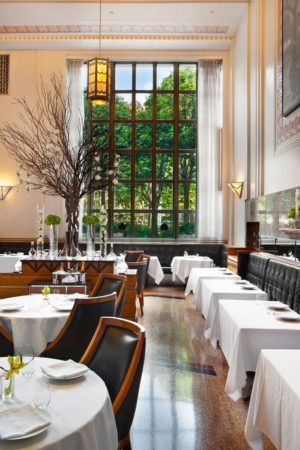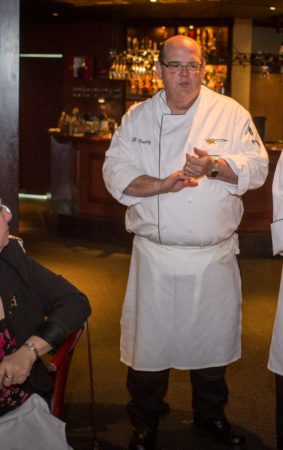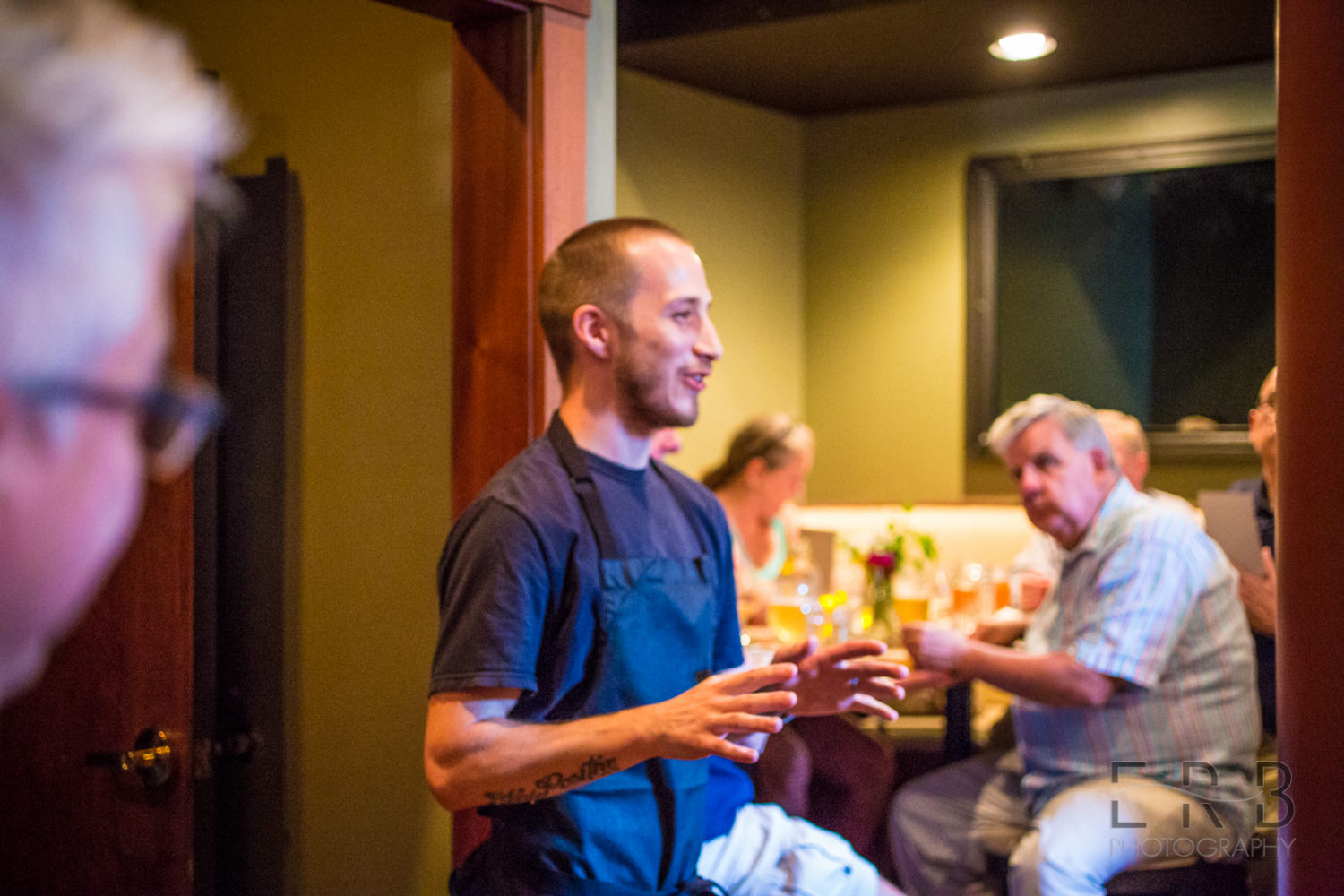
Stagnation can be death in the restaurant industry. Offering the same ol’ twenty-five meal menu to consumers with no options for flavor exploration or new dining experiences is turning the everyday dining patron into the common foe and some chefs aren’t having it. In fact, many chefs are taking the old dusty menu, ripping it in half and throwing it right out of the window and replacing them with a prix-fixe menu – giving them all the creative range they need to keep their customers engaged.

Many restaurants that employ a prix-fixe menu – a French term referencing to a menu type featuring a pre-selected list of dishes at a set price – are considered destination restaurants, offering critically acclaimed dishes and where expectations are set prior to the start of dinner. Restaurants like Chicago’s Alinea, California’s The French Laundry and New York’s Eleven Madison Park all feature exclusively fixed-price menus. When the skills of a chef supersede the individual dishes of a plain menu, prix-fixe menus may seem like the better deal. While dining at Alinea, The French Laundry and Eleven Madison Park can leave you a bit lighter in your wallet with reservations starting at $180 per person, it will keep you satisfied with their 10-14 course tasting menu. While the terms prix-fixe and tasting menu are often interchanged in the food industry, a prix-fixe menu usually offers a four-course meal – appetizer, second course, main course and a dessert – and a tasting menu offers as few as six and as many as 14, smaller- three-bite portions.
With 15,397 eating and drinking places located in Massachusetts in 2015 and projected sales of $16.5 billion in 2016, the food scene is hopping on to the ten-year-old trend of prix-fixe menus. Bar Boulud in Boston, a French-inspired menu with seasonal New England dishes, located inside Mandarin Oriental, is tapping into the market like no other. With an à la carte menu for breakfast and lunch – single-items priced individually, Bar Boulud offers a three-course meal for only $42 – prix-fixe dining without breaking the bank. As of today, foodies can indulge at Bar Boulud with options like beef Pot-au-feu terrine – a dish with beef, soaked in red wine, carrots, potatoes and seasonal vegetables – grilled chicken panzanella – a chicken leg with arugula, sourdough fennel, tomatillo and oregano and Gâteau Basque – a traditional basque custard cake with brandied cherries and vanilla anglaise.

“Dining at Bar Boulud is about more than just a meal. It is about experiencing something outside of my comfort zone. I have always been skeptical about dining at high-end restaurants with elaborate menus for the fear of not selecting the best dish. Eating from a fixed-price menu lets me trust the chef to serve his or her best meal. Also, knowing what I will eat and how much I will spend, takes away the issue of being indecisive when choosing a restaurant,” says a frequent visitor to Bar Boulud.
Whether it’s a prix-fixe meal of three-courses or the intricate tasting menu, fixed-priced menu options are becoming part of the nation’s food culture. It seems that the odds are in the favor of the customer when it comes to a prix-fixe menu – giving them fine dining options, more food for their dollar and an increased dining experience without the stress of thinking of individual dish options. But what’s in it for the chef?
In 2006, Dallas’s critically acclaimed Abacus Restaurant offered a nine-course tasting menu priced at $90. With a main ingredient of fish scraps, Chef Tre Wilcox cultivated a new culinary menu of a la carte portions, in hopes of reducing food waste and increasing consumer experience. The biggest benefit? A 75% gross profit margin on a menu that included Kobe beef carpaccio and Alaskan king crab ravioli. Not only is the profit margin promising, but the chefs are able to showcase their culinary skill sets without the boundaries of the ordinary menu. To be a chef is to create and if creating new dishes is the sole motivation behind the chef’s skill set, then allowing complete autonomy in the creation of new daily or weekly menus to cater to the chef’s local resources, culinary background and new-found inspirations is the true way to fully experience a chef’s ability in the kitchen.
“Having someone with the, ‘just cook for me’ attitude is the best thing. It is a way for customers to experience what we, as chefs, are doing. At deadhorse hill, we offer pre-fixed and tasting menus but we do it family style which allows customers to leave with exceedingly large value, pay less than the a la carte prices and enjoy the freshest ingredients available at that time to us,” says Jared Forman, Executive Chef at deadhorse hill. “For $65 per person, customers are able to enjoy a 5-course meal, family-style, which means they are getting a couple of plates per course. Recently, I served Boston Mackerel – a small quantity of fish I acquired through a friend – and added it to the tasting-menu and sold out.” Forman explains that a tasting-menu is how both customers and restaurants win. “Although, adding a tasting-menu to the routine menu is a bit hectic behind the scenes – it requires a good flow to fit into the ticketing process – it proves to leave customers with a great lasting impression on the restaurant and the quality of food. We look forward to adding our dinner and wine pairing options to the tasting-menu in time. It is an interesting way to show customers more about great quality.”

For Mass Foodies, their quarterly Chef’s Best dinner series is another event utilizing the prix-fixe menu while adding a sense of exclusivity for every diner. Inner foodies come to life at each event with a single priced ticket ranging from $56 to $120, seeking out the finer culinary abilities of the highlighted chef. “At Sonoma, I had a chance to peek into the mind of the chef that ordinarily cooks from a menu that only changes every 6 to 8 weeks,” said Jaime Flores, an attendee of April’s Chef’s Best: The Brady Experience. “Having only dined at Sonoma on one other occasion – for its regularly served menu – I was excited to see what the chef had prepared for the night. The five-course meal was nothing short of exceptional. It was a diverse dining experience, as it tugged on my personal food favorites like the rack of lamb but also opened up my taste palate with the introduction of the ahi tuna – something I usually stay clear from. For the price of my ticket, I was open to new experiences. I think that is how dining should be – an inspiration from the chef.” For the event, Chef Bill Brady concocted a vision that highlighted his years of experience and the autonomy could be tasted with every delicate bite of his carefully choreographed dishes.
Whether going out to eat is something that sparks an interest in the diverse food culture from around the world or just a simple gesture of social connection, the one thing that is certain is that if prix-fixe is an option on the menu – take it. It will open your eyes to a world of flavors beyond your daily comfort zones but it will also release the chef from the chains of his day-to-day menu.





![Course 2: Lubina [Veta la Palma] a la plancha, phytoplankton “risotto”, radishes, herbs, pickled green strawberries at Mass Foodies' Chef's Best: The Evangelous Experience. (Photo by Erb Photography)](https://massfoodandwine.com/wp-content/uploads/2016/07/Chefs_Best-Evangelous-Experience_071216-7837-300x450.jpg)
![Course 3: Slow cooked lamb neck [Lilac hedge], summer squash and lamb marrow puree, local potatoes, lovage, celery, jus at Mass Foodies' Chef's Best: The Evangelous Experience. (Photo by Erb Photography)](https://massfoodandwine.com/wp-content/uploads/2016/07/Chefs_Best-Evangelous-Experience_071216-7846-300x450.jpg)